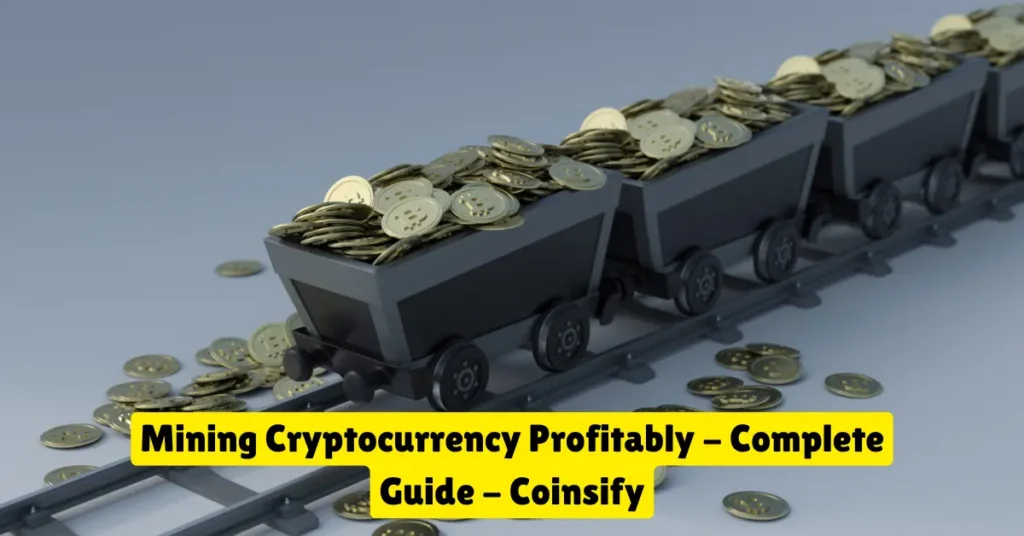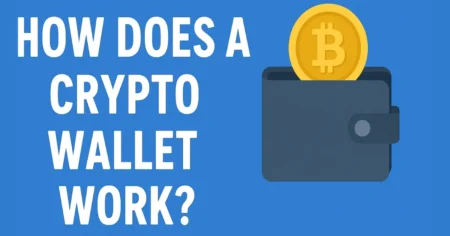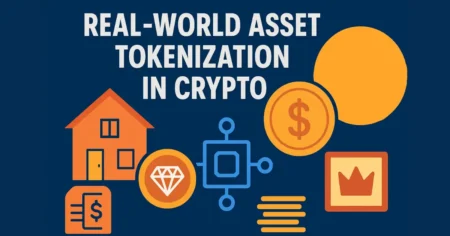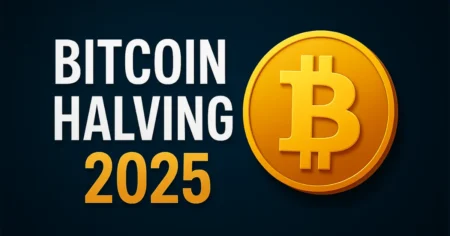Mining cryptocurrency profitably
Introduction to Cryptocurrency Mining
What is Cryptocurrency Mining?
Cryptocurrency mining is like the digital version of digging for gold—but instead of using shovels and pickaxes, you’re using powerful computers and code. At its core, mining is the process of verifying and adding new transactions to a cryptocurrency’s public ledger (called the blockchain). In return for this crucial work, miners are rewarded with newly minted coins.
Think of the blockchain as a huge, decentralized spreadsheet that records every crypto transaction ever made. Every time you send or receive cryptocurrency, that transaction has to be verified. Miners do the heavy lifting by solving complex mathematical problems that confirm these transactions are legitimate.
But why does this matter to you? Well, if you play your cards right and set up your mining operation efficiently, it can be a reliable way to earn passive income. That’s the dream, right?
How Mining Supports Blockchain Networks
Without miners, most cryptocurrencies wouldn’t function. Mining keeps blockchain networks secure and decentralized. Every block mined adds a layer of trust and security, preventing fraud and double-spending.
For instance, Bitcoin uses a “Proof of Work” (PoW) consensus mechanism, where miners compete to solve cryptographic puzzles. The first to solve it gets to add the next block and claim the reward. This makes the network extremely hard to tamper with.
In a nutshell, mining ensures that crypto ecosystems stay honest, decentralized, and tamper-proof. It’s the unsung hero of the crypto world—and potentially, a very profitable one for those who understand how to do it smartly.
Understanding the Profitability Equation
Revenue vs. Costs
Making money from crypto mining isn’t just about plugging in a machine and watching the coins roll in. There’s a fine balance between what you earn and what you spend. This is where many miners go wrong—they underestimate costs or overestimate earnings.
Revenue comes from the block rewards and transaction fees you earn. For Bitcoin, that’s currently 3.125 BTC per block post-2024 halving, plus fees. For altcoins, the numbers vary widely. But here’s the kicker: mining difficulty increases over time, so the rewards aren’t always consistent.
Costs include electricity (your biggest ongoing expense), mining hardware, software, cooling systems, maintenance, and sometimes even real estate if you’re setting up a farm.
Here’s a basic formula:
- Profit = Mining Revenue – (Electricity + Hardware + Cooling + Maintenance + Pool Fees)
- Miss any one of these, and your profits could turn to losses fast.
Key Metrics to Track for Profitability
To keep your mining operation in the green, keep an eye on these crucial metrics:
- Hashrate – Measures the speed of your mining hardware. The higher, the better.
- Mining Difficulty – Adjusts as more miners join the network. Higher difficulty means tougher competition.
- Electricity Cost per kWh – The lower, the more profit.
- Block Reward – What you earn per mined block.
- Network Fees – Extra incentives from transaction fees.
- Hardware Efficiency – Watts per hash (W/TH or W/MH), showing how energy-efficient your rig is.
Using tools like WhatToMine or NiceHash’s profitability calculator can help you predict your daily, weekly, or monthly returns. But remember, crypto is volatile. Today’s profits can shrink tomorrow.
Choosing the Right Cryptocurrency to Mine
Popular Coins to Mine in 2025
The best coin to mine isn’t always Bitcoin. In fact, unless you have access to industrial-grade ASICs and dirt-cheap electricity, you might be better off mining altcoins. Here’s a look at what’s hot in 2025:
- Kaspa (KAS) – Rising in popularity due to high profitability and GPU-friendliness.
- Ergo (ERG) – ASIC-resistant and ideal for home GPU miners.
- Ethereum Classic (ETC) – Gained traction post-Ethereum’s move to Proof of Stake.
- Ravencoin (RVN) – Strong community and solid mining returns.
- Litecoin (LTC) – Merged mining with Dogecoin makes it a dual-reward opportunity.
Each coin comes with its own difficulty, reward rate, and hardware requirements. Research before committing.
Profitability Comparison: BTC vs. Altcoins
Let’s break this down:
| Coin | Hardware Required | Electricity Sensitivity | Current ROI Potential | Beginner-Friendly |
|---|---|---|---|---|
| Bitcoin (BTC) | ASICs only | Very High | Medium | No |
| Ethereum Classic (ETC) | GPUs | Medium | High | Yes |
| Ravencoin (RVN) | GPUs | High | Medium | Yes |
| Litecoin (LTC) | ASICs | Medium | Medium | No |
| Kaspa (KAS) | GPUs | Low | Very High | Yes |
So, if you’re a solo miner just getting started, jumping into Bitcoin might not be the best move. Instead, look at altcoins where GPU mining is still profitable.
Mining Hardware: What You Really Need
ASIC vs. GPU vs. CPU Mining
Let’s talk gear. Your choice of hardware makes or breaks your mining venture.
- ASICs (Application-Specific Integrated Circuits) – Super powerful, purpose-built machines. Think Bitmain Antminer. They’re efficient but expensive and often noisy, hot, and power-hungry. Great for Bitcoin, Litecoin.
- GPUs (Graphics Processing Units) – More flexible and beginner-friendly. You can mine a variety of altcoins and resell your GPU later if needed. Ideal for coins like KAS, RVN, ERG.
- CPUs (Central Processing Units) – The weakest option. Not profitable for serious mining anymore except for niche coins.
Suggestion: Start with a mid-range GPU setup if you’re new. You’ll get hands-on experience without blowing your budget.
Top Mining Rigs for 2025
Here are a few solid options:
- Antminer S21 Pro (Bitcoin) – 200 TH/s with high energy efficiency.
- Goldshell Mini-DOGE 3 (Litecoin/Dogecoin) – Quiet, home-friendly ASIC.
- NVIDIA RTX 4090 (GPU Mining) – Powerful and efficient for altcoins.
- AMD RX 7900 XTX (GPU Mining) – Great hashrate, lower price point.
Always calculate electricity costs before buying. A rig that looks profitable on paper may end up being a money sink.
Software Essentials for Mining
Best Mining Software Options
Mining software is the brain behind your hardware. It connects your rig to the blockchain and helps you mine efficiently. Here are some go-to tools:
- NiceHash – User-friendly, auto-switching, great for beginners.
- HiveOS – Advanced management, perfect for large farms.
- Minerstat – Great for remote control and monitoring.
- PhoenixMiner / Gminer – Efficient and optimized for GPU mining.
- CGMiner – For ASICs and pros who want granular control.
Each software comes with a different interface and supported coins, so pick one that matches your setup.
Monitoring Tools to Maximize Uptime
Downtime = lost revenue. Always monitor your rigs using:
- HiveOS Dashboard
- Awesome Miner
- MSI Afterburner (to tweak GPU performance and thermals)
Set up alerts for overheating, crashes, or network issues so you can act fast and keep mining smoothly.
Calculating Your Mining Profitability
Using Online Mining Calculators
If you’re serious about mining, there’s no skipping the math. And thankfully, you don’t have to do it all manually—there are plenty of free tools that will crunch the numbers for you. Online mining calculators help you estimate how much you’ll earn daily, weekly, or monthly, based on a few key inputs.
Some of the most reliable calculators include:
- WhatToMine – Great for GPU miners with options to compare multiple altcoins.
- NiceHash Profitability Calculator – Ideal if you’re using their platform.
- CryptoCompare Mining Calculator – Simple UI for Bitcoin and top altcoins.
To get accurate estimates, you’ll need to input:
- Your hardware’s hashrate
- Electricity rate (in $/kWh)
- Power consumption (in watts)
- Pool fees (if applicable)
- Current market price of the coin
For example, if you’re using a GPU with a 500 MH/s hashrate, consuming 900W, and your electricity rate is $0.12 per kWh, a calculator can tell you whether it’s worth mining Ethereum Classic or Ravencoin today.
But here’s the catch: profitability can fluctuate daily due to network difficulty and coin prices. Always do a weekly check-in using a calculator to stay ahead.
Real-World Profit Scenarios and ROI Examples
Let’s break down a realistic mining scenario.
Case Study: GPU Miner Using RTX 4090
- Hardware cost: $2,000
- Hashrate: 1.5 GH/s (on Kaspa)
- Power usage: 450W
- Electricity cost: $0.10/kWh
- Daily earnings (at current difficulty): ~$6.00
- Daily electricity cost: ~$1.08
- Daily profit: ~$4.92
Monthly profit: ~$147.60
Break-even point: ~13.5 months
If the market spikes or difficulty drops, your ROI comes faster. But if your local power rate is $0.20/kWh, that same setup would barely break even after two years.
Key tip: Always run a worst-case and best-case projection before buying hardware.
Setting Up Your Mining Operation
Home Mining vs. Hosted Facilities
When it comes to where you mine, you’ve got two main options: at home or through a hosted facility.
Home Mining Pros:
- Full control over your hardware
- No recurring hosting fees
- Easier to tweak and experiment
Cons:
- Increased noise and heat
- Electricity spikes on your home bill
- Space and security concerns
Hosted Mining (Colocation) Pros:
- Professional-grade setup
- Cheaper electricity (in bulk)
- Less noise, hassle-free maintenance
Cons:
- Upfront setup fees
- Monthly hosting charges
- Less direct control over hardware
If you’re a beginner with just one or two GPUs, mining at home is more practical. Just make sure your room is well-ventilated and on a stable circuit. If you’re scaling up to 10+ rigs, consider hosting to manage costs and efficiency.
Electricity Costs and Optimization Tips
Electricity is the silent killer of profitability. Even with the best gear, if you’re paying too much per kilowatt-hour, you’re likely running at a loss.
Tips to lower electricity costs:
- Mine during off-peak hours if your area offers time-of-use pricing.
- Switch to a business plan—some utilities offer cheaper rates to small operations.
- Use solar panels or renewable energy, especially if you’re in a sunny or rural area.
- Undervolt your GPUs or ASICs to reduce power draw while maintaining hashrate.
Pro Tip: Even simple changes like using energy-efficient power supplies and keeping your rigs clean (to prevent overheating) can cut down energy waste by 10–15%.
Cooling, Ventilation, and Maintenance
Preventing Overheating
Mining rigs generate serious heat. Whether you’re using GPUs or ASICs, managing temperatures is essential not only for performance but also for hardware lifespan.
Risks of overheating:
- Hardware throttling
- Increased power draw
- Risk of permanent damage
- Frequent shutdowns or crashes
Effective cooling strategies:
- Proper airflow – Use intake and exhaust fans to create a steady air path.
- Room temperature management – Keep the mining room below 80°F (27°C).
- External ventilation – Use ducting to expel hot air outside.
- AC or evaporative coolers – If you’re running multiple rigs, a cooling system might be worth the investment.
Cleaning, Dust, and Long-Term Care
Mining rigs run 24/7. That means dust builds up quickly, and so does the wear and tear.
Routine Maintenance Checklist:
- Weekly: Blow dust off fans and heatsinks using compressed air.
- Monthly: Reapply thermal paste (if needed) on GPUs or CPUs.
- Quarterly: Clean power supply filters and check for loose connections.
- Annually: Test and replace worn-out fans, and back up software configs.
Pro Insight: Schedule downtime during low-profit periods to perform deep maintenance. It’s better to lose a few hours now than burn out a $2,000 rig later.
Joining a Mining Pool vs. Solo Mining
What Are Mining Pools?
Mining pools are groups of miners who combine their computing power to increase the chances of solving a block. When the pool finds a block, the rewards are split based on each miner’s contribution.
Popular Pools in 2025:
- F2Pool
- 2Miners
- K1Pool
- ViaBTC
These platforms typically charge a fee (1–2%) but make mining more consistent.
Pros and Cons of Pool Mining
Pros:
- More predictable and frequent payouts
- Less variance in earnings
- Ideal for small miners
Cons:
- Pool fees eat into your profits
- Centralized to some extent
- Less rewarding if you’re contributing low hashrate
Solo Mining:
- High Risk, High Reward
- No fees, but long gaps between rewards (or none at all)
- Best suited for those with massive hash power
Verdict: Unless you’re mining with hundreds of ASICs, pool mining is the smarter choice for beginners and mid-tier operations.
Cloud Mining: Is It Worth It in 2025?
How Cloud Mining Works
Cloud mining allows you to rent mining power from a data center rather than purchasing and managing your own hardware. You sign up with a provider, pay for a mining contract (either time-based or hash power-based), and then earn a share of the rewards generated by that rented hardware.
Think of it like investing in a farm but never getting your hands dirty. It’s marketed as passive income with none of the hassle—no hardware, no noise, no heat. But is it really that simple?
Here’s how a basic contract works:
- Choose a coin (Bitcoin, Ethereum Classic, Litecoin).
- Select the hash power (100 TH/s).
- Pay upfront or through a subscription model.
- The provider mines on your behalf.
You receive daily or weekly payouts based on your contract terms.
Scams vs. Legit Providers
Cloud mining has a checkered past. For every legit platform, there are multiple scams promising huge returns but disappearing with your money.
Red flags to watch out for:
- No transparent address or company registration.
- Unrealistic ROI claims (“Double your BTC in 30 days!”).
- Poor or no reviews online.
- Pushy sales tactics or affiliate-driven marketing.
Legit cloud mining providers in 2025 include:
- Genesis Mining – One of the oldest, still operating with transparency.
- Bitdeer – Offers both mining machines and cloud contracts.
- ECOS – Regulated provider with various plans.
Warning: Even legit cloud mining carries risk. If crypto prices crash or mining difficulty spikes, your returns could drop or even turn negative. You also have zero control over hardware maintenance or uptime.
Bottom line? Cloud mining might be okay if you absolutely can’t mine at home or don’t want to manage hardware. But for real control and better ROI, owning your own rig is usually the smarter move.
Legal and Tax Considerations
Mining Regulations Around the World
Crypto mining isn’t just about profit—it’s also about compliance. Different countries have vastly different stances on mining, from outright bans to full-scale encouragement.
Crypto-friendly countries:
- Canada – Especially Quebec, with cheap hydropower and a stable legal framework.
- Norway & Sweden – Favorable electricity rates and green energy options.
- Kazakhstan – Popular due to low operational costs, although regulations are tightening.
Countries with restrictions or bans:
- China – Banned most crypto mining due to energy concerns.
- Algeria, Morocco, Nepal – Bans on both mining and trading.
Always check local regulations before starting. Some jurisdictions require registration or licensing for large-scale operations.
Pro tip: If you’re mining from home, keep a low profile—excessive power usage or noise can attract unwanted attention from landlords or local authorities.
Reporting Crypto Mining Income
Most tax authorities now consider mining rewards as taxable income the moment you receive them, based on the fair market value at that time.
Here’s how it generally works:
- When mined: Report as income (based on USD value at time of receipt).
- When sold: Report gains or losses based on the difference from when you mined it.
Common mistakes to avoid:
- Not keeping track of timestamps and coin value when mined.
- Failing to report even if you didn’t cash out.
- Using a personal wallet without documenting inflows.
Use tools like CoinTracking, Koinly, or TokenTax to automate your mining income and capital gains reporting. It’ll save you stress during tax season.
And yes—if you’re mining as a business, you can deduct hardware, electricity, internet costs, and even a portion of your rent or mortgage if you have a home office. Check with a crypto-savvy accountant.
Avoiding Common Mining Mistakes
Overestimating Profits
One of the most common pitfalls for new miners is getting swept up in the hype. You see online videos or blog posts claiming “$300/day from a single GPU,” and you jump in headfirst without doing your homework.
Here’s the truth: mining isn’t a get-rich-quick scheme. It’s a tech-heavy, capital-intensive hustle that requires strategy and patience.
Typical mistakes:
- Using outdated profitability calculators
- Ignoring electricity costs
- Assuming today’s coin price will hold
- Buying hardware during market peaks at inflated prices
If you’re buying a $2,000 rig, make sure it pays for itself within 12–18 months—otherwise, you’re playing the lottery, not investing.
Ignoring Security and Wallet Safety
You’re generating real value—digital assets that can be worth thousands of dollars. Treat your mining rewards like real money, because they are.
Don’t make these mistakes:
- Mining directly into exchange wallets (risk of hacks or frozen funds)
- Using weak passwords on mining software or pools
- Skipping 2FA on wallets and pool accounts
Use a hardware wallet like Ledger or Trezor to store your earnings securely. And make sure your mining PCs are protected by antivirus software and isolated from your everyday internet activity.
Security tip: Always double-check wallet addresses before payouts. Malware can replace them silently, rerouting your funds to hackers.
Scaling Your Mining Business
From Hobbyist to Enterprise
If you’ve mastered a few rigs and are seeing consistent returns, it might be time to think about going big. Scaling your mining operation isn’t just about buying more gear—it’s about becoming more efficient.
Steps to scale smartly:
- Optimize your existing rigs first (power usage, uptime, cooling).
- Calculate ROI on adding 5, 10, or 50 more rigs.
- Consider moving from home to a colocation or warehouse facility.
- Negotiate bulk electricity rates or contracts.
- Automate everything—from software monitoring to payouts.
Some miners start offering hosting services for others, turning their mining knowledge into a side business. Others go the route of building mini data centers or investing in renewable energy sources.
Reminder: Scaling means more liability, regulation, and upfront cost. Don’t expand unless your current operation is rock solid.
Diversifying Your Crypto Income
Mining is just one income stream in the crypto world. To stay profitable in the long run, diversify:
- Staking – Earn passive income from holding PoS coins.
- Running a Masternode – Great for coins like Dash or Zcoin.
- Trading – Use your mined assets to swing trade during high volatility.
- Lending or DeFi platforms – Lend your crypto for interest.
This way, if mining becomes unprofitable temporarily, your other crypto assets can still generate income.
Staying Up to Date With Market Trends
Following Difficulty Adjustments
Every major coin adjusts its mining difficulty periodically to keep block times consistent. If more miners join the network, the difficulty goes up. If they leave, it drops.
Why does this matter? Because your profit margins depend on it.
If difficulty spikes and you’re running older hardware, your earnings could halve overnight. Watch difficulty charts on platforms like CoinWarz or BTC.com and plan accordingly.
Tip: When difficulty drops, smaller miners often enjoy temporary boosts in profit. That’s the best time to run your rigs full force.
Predicting Price Movements
Mining is most profitable when coin prices are high. Staying ahead of market trends gives you the chance to:
- Hold coins you mine during bull runs
- Pause or scale down during bear markets
- Switch between coins when market caps shift
Follow influencers, technical analysts, and on-chain data to get a sense of where things are headed. You don’t need to be a day trader—but having a pulse on the market helps you decide whether to HODL or cash out.
Final Thoughts on Profitably Mining Crypto in 2025
Is It Still Worth It?
The answer? Yes—but only if you do it right. Crypto mining in 2025 is no longer the Wild West—it’s a professional, competitive field where strategy matters more than luck.
The days of getting rich overnight from a single graphics card are gone. But with smart planning, disciplined budgeting, and a tech-savvy mindset, you can still build a mining operation that generates steady income.
Here’s what sets profitable miners apart:
- They track electricity and ROI obsessively.
- They update hardware and software regularly.
- They plan for the long term—not just the next bull run.
Key Takeaways and Final Advice
- Start small and scale carefully.
- Research every coin and calculator before mining.
- Monitor your setup daily—uptime is money.
- Stay safe: use hardware wallets and strong passwords.
- Diversify your crypto income beyond just mining.
Crypto mining isn’t for everyone, but for those willing to learn and adapt, it remains one of the most exciting ways to earn in the digital economy.
FAQs
Is crypto mining still profitable in 2025?
Yes, if managed correctly. Profitability depends on the coin you mine, electricity cost, hardware efficiency, and market conditions. Altcoins are often more profitable for home miners than Bitcoin.
What’s the best coin to mine right now?
Kaspa (KAS), Ethereum Classic (ETC), and Ravencoin (RVN) are top choices in 2025 due to their GPU-friendliness and strong profitability.
How much does it cost to start mining?
You can start with a basic GPU rig for around $1,000–$2,000. Industrial setups can cost tens of thousands. Always factor in electricity and cooling.
Can I mine crypto using a laptop?
Technically, yes—but it’s highly inefficient and can damage your laptop. Mining is better suited to dedicated hardware.
What’s the ROI for a beginner miner?
A modest GPU rig can break even in 12–18 months under ideal conditions. But volatility means returns can vary widely. Always plan for the long haul.
Also, read
- What is a Crypto Wallet and How Does It Work? – Coinsify
- 10 Crypto Terms Every Beginner Must Know – Coinsify
- What is Blockchain Technology – Complete Guide – Coinsify
- How to Buy Crypto Safely in 2025 – Complete Guide – Coinsify
- Bitcoin vs Ethereum: Key Differences Explained – Complete Guide
- Ultimate Blockchain Glossary: Learn Blockchain Terms Easily
- How to Buy Bitcoin Safely (Complete Beginner’s Guide)
- Top 10 Crypto Wallets for Beginners (2025 Edition)
- What is Cryptocurrency? A Beginner-Friendly Guide (2025)






